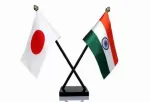
Key Points
India positioned competitively in US tariff announcements
Bilateral Trade Agreement crucial for long-term export strategy
Electronics sector shows resilience amid geopolitical shifts
Strategic negotiations key to maintaining trade advantages
While some countries like Brazil and Egypt enjoy marginally better tariff outcomes, India’s positioning, particularly with China facing combined tariffs of up to 54 per cent-79 per cent and Vietnam at 44 per cent, offers a valuable near-term window of export competitiveness.
“However, the true long-term inflection point for India's electronics trade with the US will rest on the successful conclusion of a Bilateral Trade Agreement (BTA). The BTA must now become the cornerstone of our trade strategy, unlocking stable market access, tariff predictability, and a framework for scaling high-value electronics exports,” Pankaj Mohindroo, Chairman, the India Cellular and Electronics Association (ICEA), told IANS.
As the geopolitical and economic landscape evolves, India must strategise swiftly, leveraging trade diplomacy, domestic policy shifts, and industrial resilience to mitigate risks and maintain its competitive edge in global trade, said industry leaders.
“Negotiating a bilateral trade deal could ease pressure, while adjusting import tariffs on select US goods may address concerns. India could navigate a dual-track approach -- balancing negotiations and countermeasures to safeguard its economic interests,” said Ashok Chandak, President of the India Electronics and Semiconductor Association (IESA).
Fortunately, both India and the US are eager to expand bilateral trade to $500 billion, creating opportunities for a mutually beneficial agreement and interest to continue the discussions on the agreement.
Semiconductors and pharma sectors are spared from tariffs, recognising their foundational role in global supply chains and public health.
Also, India’s low electronics imports from the US provide room for tariff adjustments to maintain trade balance.
According to experts, India can respond proactively through swift action, strategic planning, and strong negotiations to mitigate its impact and safeguard trade interests.
“IESA remains committed to working closely with the Ministry of Electronics and IT and the Ministry of Commerce and Industry to develop strategies that minimise risks and position India ahead of global competition,” said Chandak.
“As we await possible retaliatory moves from other major economies, our deepest focus must remain on converting this strategic opening into sustained export growth and supply chain integration,” added Mohindroo.
In the wake of Trump’s tariffs, India’s electronics sector remains well-positioned to sustain its competitiveness.
“As global supply chains potentially realign in response to these policy shifts, India has a strategic opportunity to strengthen its role in the global electronics ecosystem. To fully capitalise on this potential, India must advance strategic policy initiatives to further enhance its attractiveness and deepen integration into global value chains,” Prabhu Ram, VP-Industry Research Group, CyberMedia Research (CMR), told IANS.






